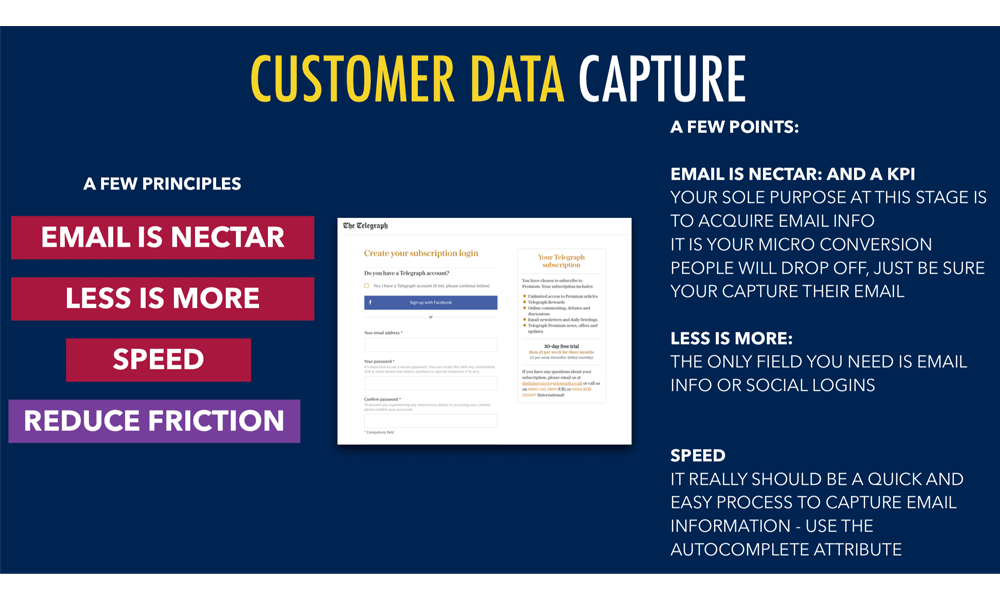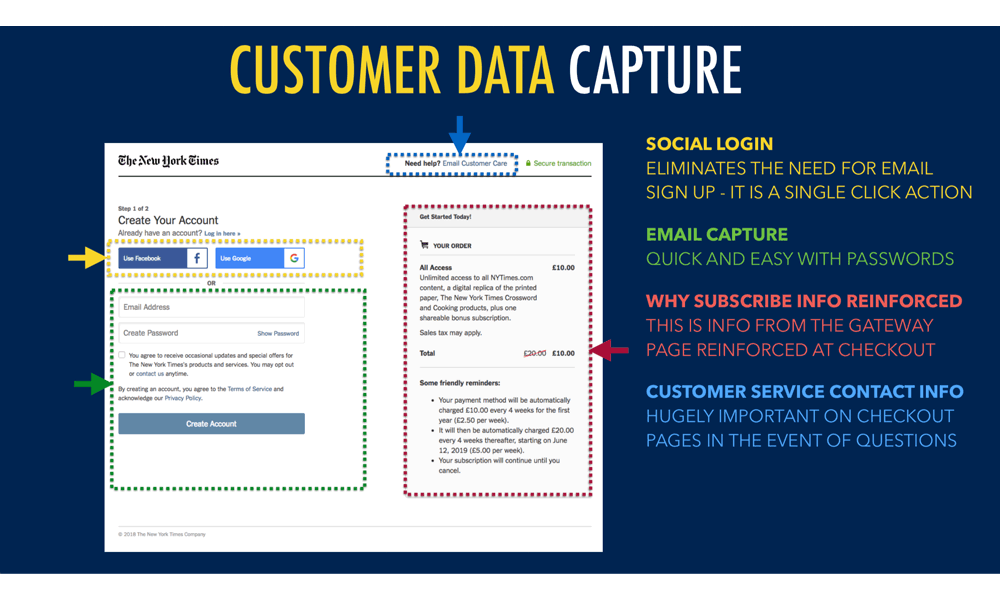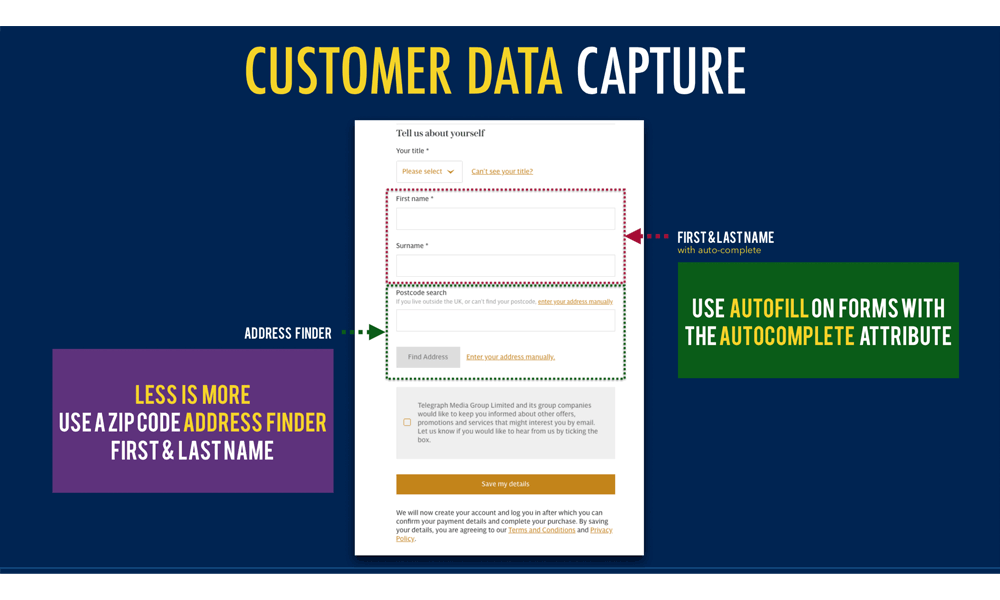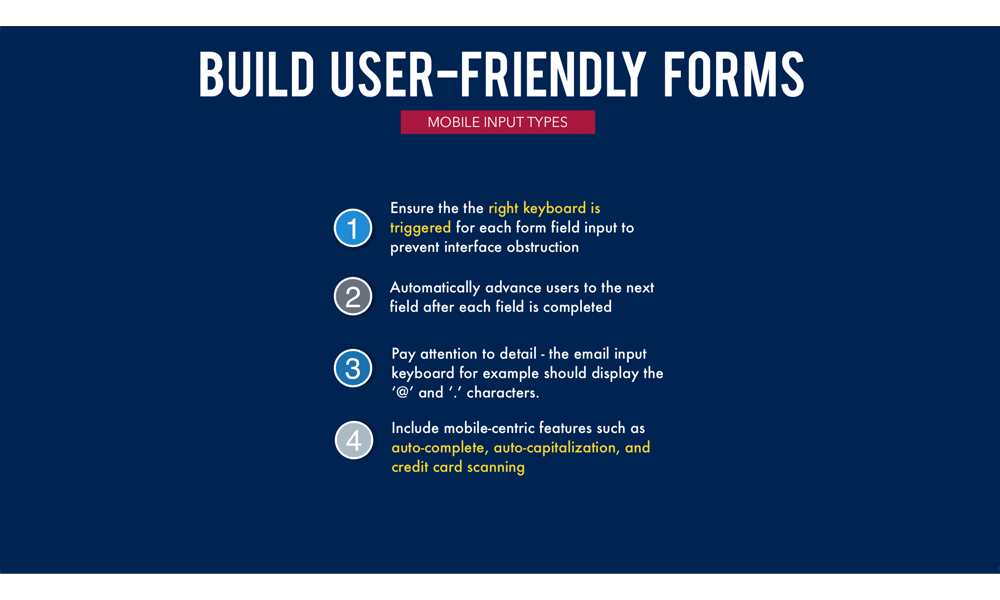Facebook is the largest social media, and as part of its Facebook Journalism Project series, the social giant shared some tips on how to maximize the performance of sign-up and checkout flows for publications.
"For publishers, it’s the moment of truth: A reader has decided they want to become a digital subscriber, and they now just need to complete the purchase," said Facebook, before highlighting how outlets tend to create checkout flows that aren't mobile friendly or were originally built to support print, not digital, subscriptions.
"You’ve built up your brand, and when it comes time for them to pay it has to be frictionless."
And this is where Kunle Campbell shared some tips on how to improve checkout flows to maximize their conversions. The focus of the advise is on media publications specifically. The strategies are relevant for all brands that are looking to grow their email lists, and boost direct connection with their audience.
Get People's Email Addresses

To maximize their conversions, the first thing to do is to get people's email addresses. And here, brands need to leverage speed and simplicity. These are the key when looking to capture audience email addresses.
As noted on the graphic above, reducing friction can lower the chances that users will drop-off in the sign-up process. With speed, it should be "a quick and easy process to capture email information," said Facebook, adding that an autocomplete attribute should help them with this.
"Similarly, you don’t want to force users to immediately create an account - that adds an extra step of friction. Publishers should encourage guest checkouts, and once users have submitted their email address and actually paid, you can encourage them to create a login."
Acquiring people's email address is the key, because some users are inevitably going to abandon their carts. With email information, brands can follow up with them to resume their purchase.

Brands can also consider enabling social logins to hasten the process. This is because people are prone to make mistakes when they are on mobile. "They might not have their autofill done enough. You need to get them to put in as accurate information as possible. Social logins can help."
"Enabling logins with Twitter, Google, or Facebook can help expedite the process and make it easier for users to sign up - especially if they’re on mobile."
By focusing on the key information, brands can maximize response, and also better facilitate conversion via mobile, as there’s less to enter for people on the go.
Making It Easy To Pay
When asking about information, brands need to ask as little as possible.
For example, when it comes to the time users need to enter their credit card information, publishers should ask as little information as possible. "If someone is subscribing to a digital-only subscription, there’s no reason to request that they enter their full address."
Facebook recommends publishers to enable autocomplete forms and also using an address finder which should enable users to submit their address in one field. All major browser supports this, and it can save users' information for easier later completion.

As for the payment options, publishers may need to provide as many options as possible.
For example, one-click payment systems such as Apple Pay, Google Pay, Pay with Amazon, and PayPal can ease the checkout process - especially on mobile.
"At a minimum, you should have two, and ideally you should have three running and testing."
Design With Mobile In Mind
More people are browsing the web and purchase things through their mobile devices. This is the main reason why brands need to ensure that their website is mobile-friendly.
"The future is becoming increasingly mobile and publishers have to checkout flows that are optimized for smaller screens."
This is why publishers are recommended to design their checkouts page with mobile users mind. By using centrally oriented end-to-end, for example, or adding elegible thumb-friendly buttons. Forms should also automatically advance to the next field once one is complete. This should ease the process of checking out, as well as experience.
Publishers can also use real-time validation to let users know immediately if they’ve entered something incorrectly. More than often, people submit forms without filling all the required fields, only to find out later on the page.
To prevent bad user experience, publishers can use green check marks to show a properly completed field and a progress bar to show how much the user has completed.
Another thing is that mobile checkout form should have fields with correct keyboard displays. For example, when users need to enter their credit card number, the field should open the number-focused keyboard.

And for last, it's recommended that publishers use extended validation SSL certificates on mobile. "It reinforces that your brand is a stable company."
It's also recommended that publishers time how long it takes users to get from the subscription gateway through the confirmation. This should give some sense of how easy it is for users to complete the checkout process.
"It’s a metric you must start to measure."
There are some good notes here which, as Facebook said, should help publications seeking to boost sign-ups. The overall message is that mobile has become the key method of connection, and brands need to keep simplicity in mind - which should also benefit desktop users.
But still, Facebook's strategy may not work for some brands. This is why publishers need to regularly test their strategies to see what works best for their audience.